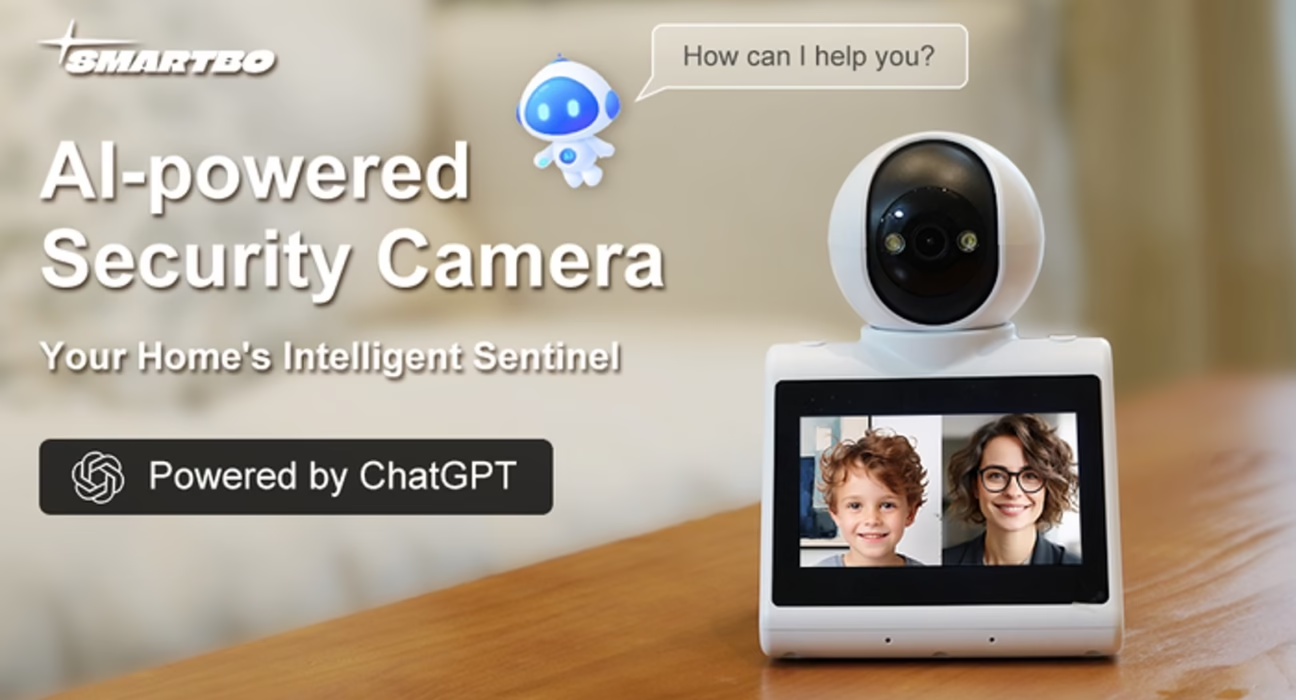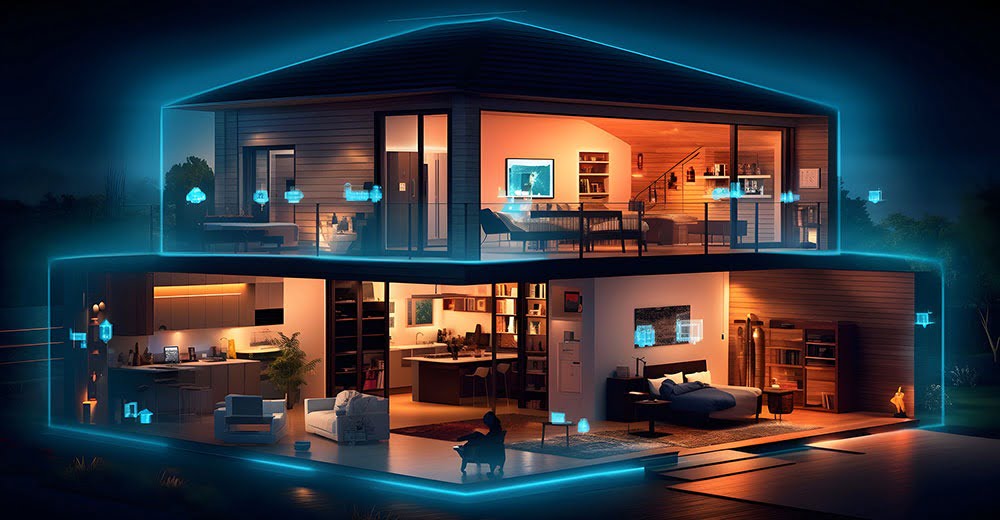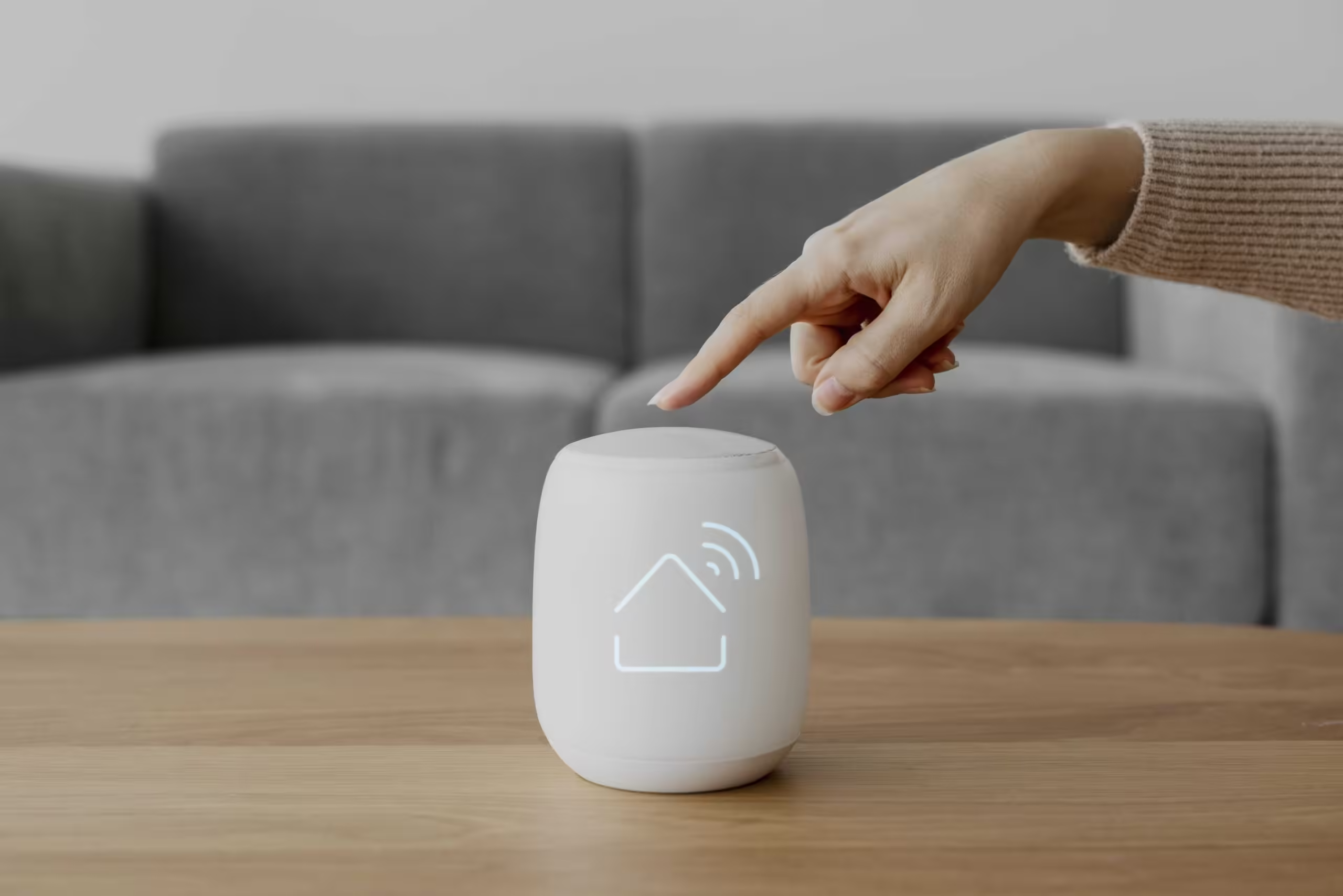How Game-Changing AI-Powered Security Cameras Are Revolutionizing Home Safety
Estimated reading time: 9 minutes
Key Takeaways
- Artificial intelligence in security cameras dramatically cuts down on annoying false alarms by smartly telling the difference between real potential threats and everyday happenings like pets or swaying branches.
- Advanced capabilities such as real-time threat detection, constantly improving adaptive learning, facial recognition technology, and specific AI burglar detection features transform these cameras from simple recording devices into proactive security partners.
- Connecting with other smart home gadgets enables automated security responses – think doors locking automatically or lights switching on the moment a potential issue is spotted.
- Smart facial recognition doorbells serve as your front-door sentinels, recognizing familiar faces and helping deter those pesky package thieves.
- Despite their power, AI cameras bring up significant privacy concerns. It’s wise to look for systems offering local storage options and robust end-to-end encryption to keep your footage secure.
- Looking ahead, expect trends like faster 5G integration, quicker on-device processing with edge computing, and environmental sensors working alongside AI to offer a wider net of safety monitoring.
Table of Contents
- How Game-Changing AI-Powered Security Cameras Are Revolutionizing Home Safety
- Key Takeaways
- 1. Introduction to Modern Home Security Innovations
- 2. The Rise of AI in Home Surveillance
- 3. Features of Game-Changing AI-Powered Security Cameras
- 4. Facial Recognition Doorbells: A Frontline Defense
- 5. AI Burglar Detection: Proactive vs. Reactive Security
- 6. Privacy and Ethical Considerations in Smart Home Security
- 7. Future Trends in Smart Home Security
- Frequently Asked Questions (FAQ)
1. Introduction to Modern Home Security Innovations
Let’s be honest, those old security systems could be more trouble than they were worth. Remember the fuzzy, almost useless video feeds? Or the constant pinging alerts because a cat decided to take a shortcut through your yard? Thankfully, the world of home protection has moved on significantly. We’re stepping away from the era of just relying on loud, often ignored alarms and basic motion sensors. Today, smart home security is getting a serious Intelligenz boost, primarily thanks to the arrival of truly game-changing AI-powered security cameras. Think of these less as passive observers and more as smart, proactive guardians for your home. They have the brains to analyze complex scenes, spot potential trouble before it happens, and even kick off automated responses instantly. It’s a massive upgrade in how we safeguard our homes and families.

Traditional security setups, especially the ones using simple motion detection, are infamous for burying you in false alarms. Passing headlights, branches dancing in the wind, even the neighbor’s dog sniffing around your bins – all could trigger an alert. This constant stream of irrelevant notifications leads to what’s often called “alert fatigue,” where you start tuning out the warnings, potentially missing a real threat when it finally occurs. AI-infused cameras, however, are built differently; they understand context. Research highlighted by Envysion suggests these smarter systems can slash false alarms by a whopping 60%. How? By gradually learning the ‘normal’ rhythm of activity around your property. They get impressively good at telling the difference between harmless events and genuinely suspicious actions, reportedly hitting 98% accuracy in distinguishing a potential intruder from, say, a wandering deer. Moreover, as KySecured points out, AI-driven systems can take automatic actions like locking doors or notifying authorities *before* things escalate, shifting security from a reactive measure to a preventative one. This smart automation adds a crucial layer of proactive defense, making you feel safer. The Evolution of Smart Home Technology clearly charts this path from basic ideas to the sophisticated AI integration we have access to today.
2. The Rise of AI in Home Surveillance
Bringing *AI into home surveillance* is fundamentally changing the game. It’s no longer about merely recording what happens; it’s about understanding the ‘what’ and ‘why’ behind the footage. These sophisticated systems use complex machine learning algorithms – essentially digital brains – that continuously watch video streams, pick out meaningful patterns, spot anything unusual, and even learn the unique daily routines of your household. Think of it like a digital neighbourhood watch that gets smarter over time. This ability to learn, adapt, and personalize its monitoring is what makes AI surveillance so revolutionary. As explored in AI in Smart Home Devices, this isn’t just happening in security; artificial intelligence is weaving itself into the fabric of our homes, boosting both convenience and safety across the board.
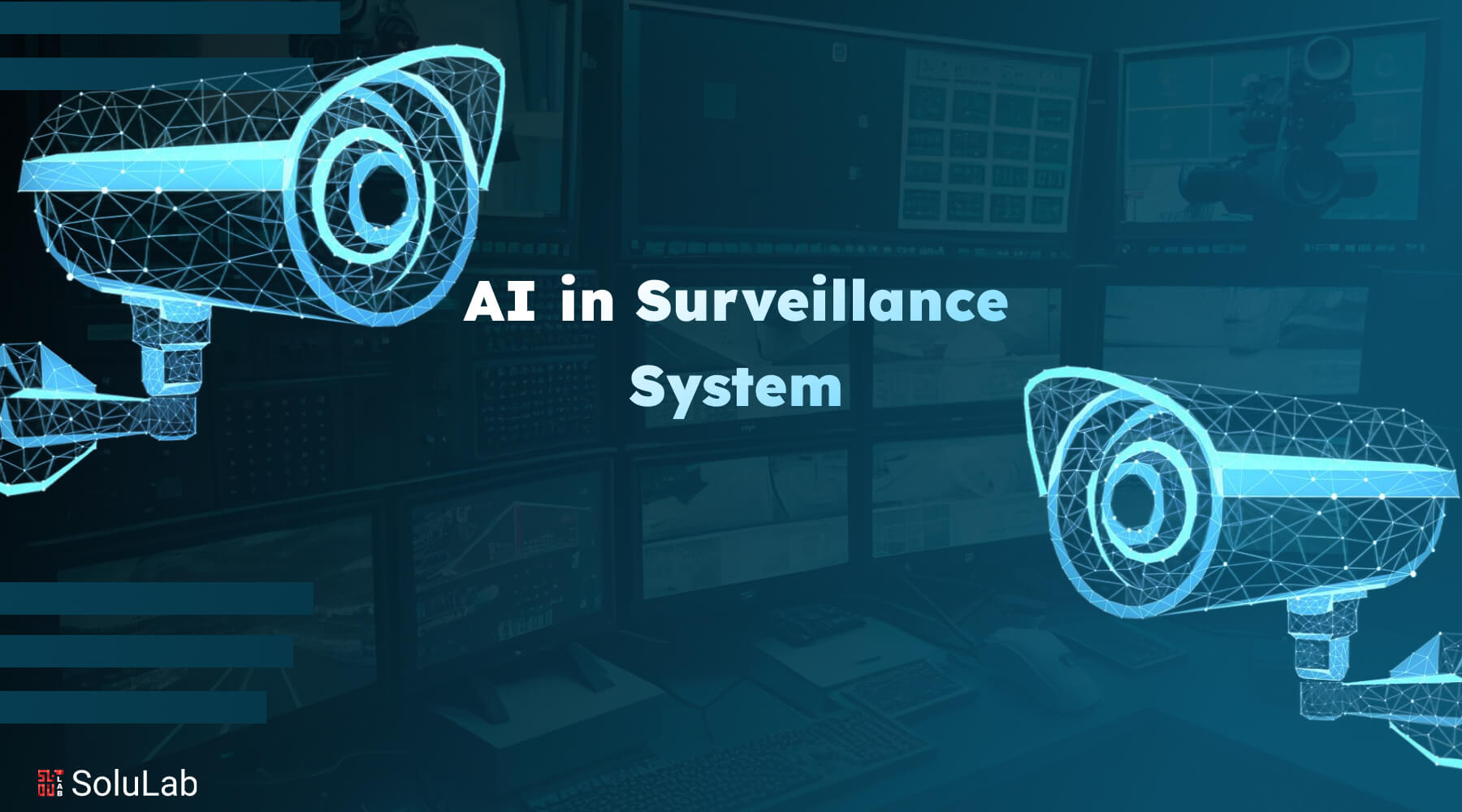
Key Advancements
- Real-Time Threat Detection: Forget basic motion sensing. Today’s AI cameras employ advanced object detection and even analyze behaviour. They can tell the difference between people, cars, animals, and sometimes even specific objects like packages. For instance, systems from companies like Reolink can be set to specifically alert you if a person lingers suspiciously by your garage late at night, while smartly ignoring the predictable movement of cars on the street or squirrels in the trees. This level of detail drastically cuts down on notification noise, ensuring the alerts you *do* get are more likely to matter.

- Adaptive Learning: This might be the most impressive part of AI surveillance – its ability to learn and adapt. Over time, these systems build a detailed profile of what’s ‘normal’ for your specific environment. They learn things like: your partner leaves for work at 7 AM every weekday, the kids get home from school around 3:30 PM, the delivery truck usually arrives mid-morning. The AI logs these as routine. As a result, it won’t bother you with alerts for these everyday events. But what happens if an unfamiliar person is seen trying your back gate at 2 AM? The system instantly flags this as unusual and potentially threatening, triggering an immediate alert or alarm. This personalized tuning makes the system incredibly accurate and relevant to *your* life.
The real-world impact of this adaptive learning is significant. According to insights from KySecured, some AI systems demonstrate accuracy improvements of up to 40% within just the first month of operation as they fine-tune their understanding of your environment. This ongoing refinement means your security system actually gets better and less intrusive the longer you use it.
3. Features of Game-Changing AI-Powered Security Cameras
So, what exactly makes these cameras *game-changing*? It boils down to the specific, intelligent features that artificial intelligence unlocks. These aren’t just minor tweaks; they represent fundamental shifts in capability. Let’s unpack some of the standout features that are truly reshaping home security:
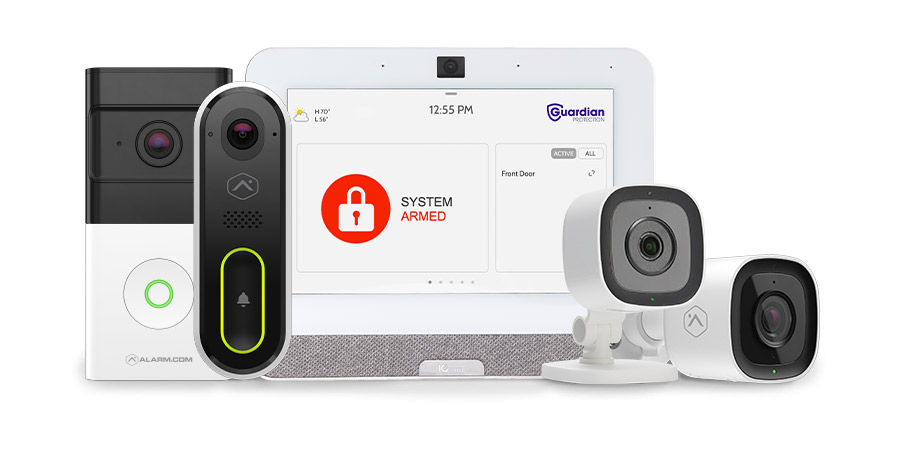
Facial Recognition
- Personalized Greetings (and Warnings): Imagine your camera recognizing your kids arriving home from school or the dog walker showing up for their scheduled visit. These systems can learn the faces of family, friends, delivery drivers, and other regulars.
- Smarter Alerts, Fewer Annoyances: By knowing who’s who, the system avoids bugging you every time a familiar face appears. You get notified about unrecognized individuals, not your spouse pulling into the driveway. This adds convenience and reduces unnecessary distractions.
- Real-World Use: Some leading brands, like those mentioned by Reolink, boast cameras that can store profiles for dozens or even hundreds of faces. The system continuously learns and improves these profiles, getting better at recognition over time, even as people change hairstyles or wear glasses.
AI Burglar Detection
- Thinking Like a Security Guard: This goes way beyond simple motion detection. AI employs predictive analysis to spot behaviours often linked to break-in attempts. Is someone lingering suspiciously near your back door late at night? Are they peering into windows or trying handles? Did the camera spot someone carrying what looks like a crowbar? The AI is trained to recognize these red flags.
- Stopping Trouble Before It Starts: The ultimate goal here is prevention, not just recording. Research cited by platforms like Spot AI indicates that these intelligent systems could potentially cut down burglary attempts significantly – perhaps by up to 50% – by providing early warnings. This critical heads-up gives homeowners or security services a chance to intervene *before* someone forces entry.
Smart Integration
- Your Security Team Talks: Modern AI cameras don’t work in isolation. They often connect seamlessly with other smart home gadgets – think smart locks, automated lighting, sirens, and even voice assistants like Alexa or Google Assistant. Central hubs like the Google Nest Hub can coordinate these devices.
- Automated Security Plays: This connectivity allows for powerful, automated responses. For example, if your AI camera detects someone trying to force open a window at night, it could trigger a sequence: instantly turn on all outdoor floodlights, flash indoor lights red, lock all smart doors, sound a loud siren, and send a critical alert with video preview straight to your phone and maybe even a monitoring service.

Behavior Analysis
- Spotting the Out-of-Place: AI is exceptionally good at noticing when something doesn’t fit the usual pattern. This could be sudden, erratic movements, an unfamiliar car parked across the street for too long, a package left in an odd spot, or someone lingering in an area you’ve marked as off-limits (like your backyard pool area after hours).
- Understanding the Scene: As experts at platforms like Lumana emphasize, context is everything. AI helps the system differentiate. Is that a delivery person quickly dropping off a package and leaving (normal)? Or is someone crouching near your basement window trying to pry it open (highly suspicious)? This contextual understanding makes the alerts far more meaningful.
4. Facial Recognition Doorbells: A Frontline Defense
Even the humble doorbell has joined the AI revolution. *Facial recognition doorbells* are quickly becoming a vital first layer of security for today’s homes. They cleverly combine the classic doorbell function with a high-definition camera and the smarts of AI-powered identification, creating a powerful guardian right at your front step.
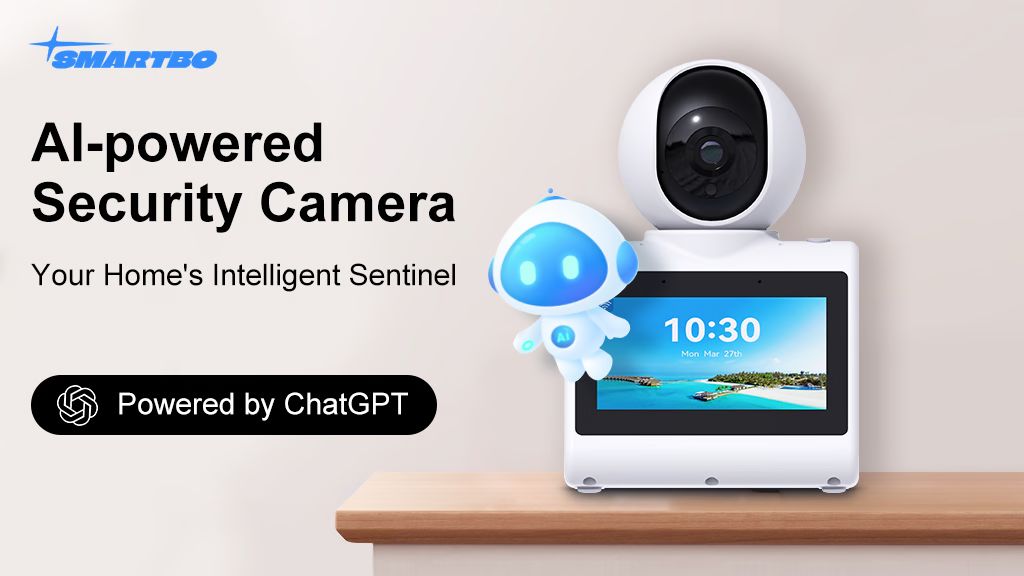
- Knowing Who’s Knocking (or Approaching): These smart doorbells get to know the regulars – your family, close friends, the mail carrier who comes every day, maybe even trusted neighbours. When a recognized face approaches your door, instead of just a generic “Motion Detected” alert, you might get a specific notification like, “Dad is at the door” or “Delivery driver approaching.” This immediately tells you if it’s someone expected or someone unknown.
- Fighting Back Against Package Pirates: Let’s face it, package theft is incredibly annoying and increasingly common. AI-powered doorbells tackle this problem head-on. They can detect when a package has been delivered and then keep an eye on that specific area. If an *unrecognized* person later approaches or lingers near your parcels, the system can send you a priority alert, letting you check the live feed or even speak through the doorbell’s speaker. This presence alone can often deter thieves, and if not, you have clear video evidence.
And these aren’t just theoretical benefits; the effectiveness is measurable. A 2023 study reference by Rescu pointed to a notable 35% drop in stolen packages for homes using these AI-enhanced doorbells. Plus, combining these doorbells with sophisticated platforms, such as those described by Coram.ai, means homeowners get smarter, context-aware alerts right on their phones. You can see who’s there, get an AI summary of what’s happening (e.g., “Unrecognized person looking at package”), and even chat with them through two-way audio, no matter if you’re at work or on vacation.
5. AI Burglar Detection: Proactive vs. Reactive Security
One of the most profound changes AI brings to home security is the shift from being merely *reactive* to genuinely *proactive*. Think about traditional systems: the alarm usually blares *after* a window smashes or a door is forced open. You often review security footage *after* you realize something is missing. *AI burglar detection*, however, flips the script. It aims to identify and respond to potential threats *before* they escalate into actual break-ins.

- Spotting Trouble Brewing: AI algorithms aren’t just looking for any movement; they’re trained to recognize the specific signals that often precede a break-in. This could involve identifying suspicious objects (like someone carrying a crowbar or glass cutter near your house) or analyzing behaviors (like an individual systematically checking window latches under the cover of darkness, or lurking in the shadows near a vulnerable entry point). The AI considers posture, movement patterns, time of day, and object interaction to gauge intent – is this person just walking by, or are they casing the joint?
- Real-World Prevention Power: The potential impact here is huge. Consider a 2023 pilot program mentioned by Ultralytics. Their study reported an impressive 45% reduction in successful burglaries within the monitored neighborhood. This success wasn’t just luck; it was attributed directly to AI-powered cameras alerting homeowners and security services *before* intruders actually managed to get inside. That crucial early warning provided the time needed to react – turn on lights, sound an alarm, call the police, or even use two-way audio to warn off the potential intruder.
Experts at resources like Envysion add that advanced predictive analytics can even try to track how potential intruders move around a property. By noticing someone first check the back door, then move towards a side window, the AI might anticipate their likely point of attempted entry, focusing alerts and recording there. This ability to anticipate and warn proactively marks a true paradigm shift. It’s about moving from simply recording crime to actively working to prevent it from happening in the first place.
6. Privacy and Ethical Considerations in Smart Home Security
Okay, let’s talk about the elephant in the room. While the beefed-up protection from *smart home security* systems, especially AI-driven ones, is incredibly appealing, we absolutely need to discuss the privacy and ethical side of things. Putting cameras around your home that are constantly watching, analyzing environments, recognizing faces, and potentially storing large amounts of personal data isn’t something to take lightly.

- Your Data, Your Castle Walls: The core concern revolves around data privacy. When your camera records video, especially footage that includes identifiable faces or conversations picked up by microphones, where does that data go? Is it stored securely in the cloud? Could hackers access it? What about the company that makes the camera – what are their policies on accessing or sharing your footage? These aren’t paranoid questions; they’re essential considerations in an age where data breaches are common.
- Smart Choices for Peace of Mind (Ethical Best Practices & Tips):
- Keep it Local (When Possible): Seriously consider cameras offering local storage options. This means the video saves directly onto an SD card inside the camera or onto a dedicated storage device connected to your home network (like a NAS drive). Why is this better? It keeps your sensitive footage physically within your home, drastically reducing the risk of it being exposed through cloud server hacks or accessed by third parties without your explicit consent. While cloud storage offers convenience for remote access, local storage gives you maximum control. Protecting personal data online starts with controlling where it resides.
- Encryption is Non-Negotiable: Look for systems that boast strong end-to-end encryption (E2EE). As highlighted by security-focused platforms like Lumana, E2EE essentially scrambles your video footage the moment it leaves the camera and only unscrambles it on your authorized phone or computer. This means even if someone intercepted the data stream during transmission, it would be unreadable gibberish without your unique decryption key. Make sure any cloud storage used also encrypts data “at rest” (while it’s stored on their servers).
- Demand Transparency and Control: Choose brands known for being upfront about their data practices. Read their privacy policies (yes, really!). Good systems provide clear, user-friendly controls. Can you easily turn off the microphone? Can you define specific “privacy zones” within the camera’s view that it won’t record (like a neighbor’s window or a sensitive area inside your home)? Can you easily manage or delete stored recordings and any facial recognition profiles the system creates?
- Mind Your Neighbors and the Law: Think carefully about where you point your cameras. Aim them at your own property – your entrances, yard, driveway. Avoid angling them directly into neighbors’ windows or private backyards. Be aware of local regulations regarding surveillance, especially concerning audio recording, which often has stricter rules than video.
- Stay Updated: Manufacturers often release firmware updates to patch security vulnerabilities and improve performance. Choose a brand with a good track record of providing timely updates and ensure your cameras are kept up-to-date.
Finding the right balance is key. We want the powerful security benefits AI cameras offer, but not at the cost of our fundamental right to privacy. By choosing reputable manufacturers, understanding the settings, and making conscious decisions about data storage and camera placement, you can leverage this technology responsibly.
7. Future Trends in Smart Home Security
If you think AI security cameras are impressive now, just wait. The evolution of *AI in home surveillance* is still accelerating, and some seriously cool advancements are on the horizon that promise to make our homes even smarter and safer.
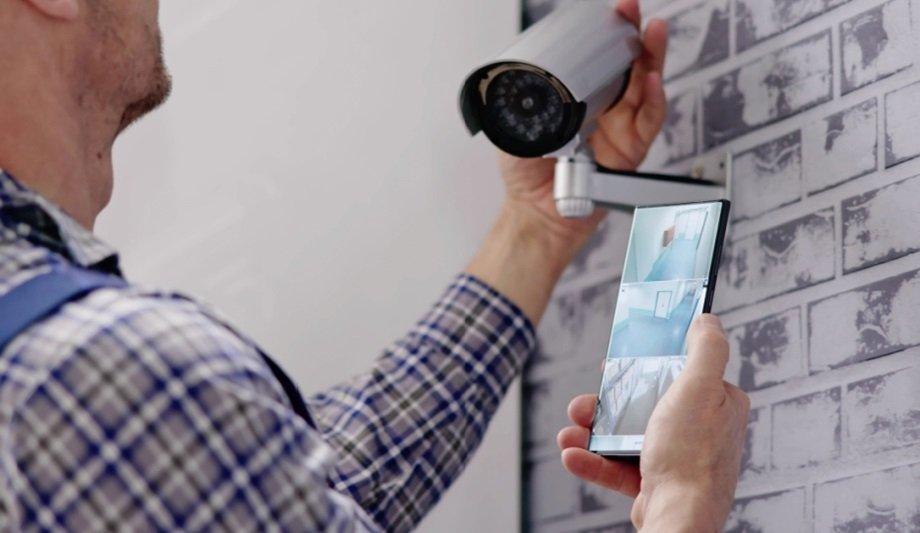
- Need for Speed: 5G Integration: As 5G networks become more widespread, expect a noticeable upgrade in camera performance. 5G offers blazing-fast data speeds and incredibly low latency (the delay between something happening and the signal reaching you). For you, this means smoother, higher-resolution video streaming with virtually no lag, and instant push notifications the moment something is detected. Faster data transmission also enables more complex AI analysis to happen quicker, potentially even in the cloud without significant delay.
- Thinking on the Spot: Edge Computing: Currently, much of the heavy AI processing might happen in the cloud. Edge computing flips this, putting more processing power directly into the camera itself or a local hub within your home network. What’s the big deal? It means faster analysis (data doesn’t have to travel to a distant server and back), reduced reliance on constant internet connectivity for core AI features, less internet bandwidth consumption, and a boost for privacy since more raw video data stays local. Experts like those at Rescu anticipate that edge AI processing will become a standard feature in many security devices within the next few years.
- Beyond Sight: Environmental Sensors Integration: The future of smart security isn’t just about cameras. Imagine systems where your AI security hub also connects to smoke detectors, carbon monoxide sensors, water leak detectors, and maybe even air quality monitors. The AI could then fuse data from all these sources. For example, it might correlate a smoke detector alert with camera footage showing haze, providing faster visual confirmation of a fire. Or it could detect a carbon monoxide leak and automatically unlock doors for emergency services while alerting you. This holistic approach moves beyond intrusion detection to comprehensive home safety monitoring. Keep an eye on Cutting Edge AI Technologies to see how sensor fusion develops.
- Predicting More Than Break-Ins: Environmental Alerts: Taking things even further, platforms envisioned by companies like Coram.ai see a future where AI security systems could tap into local environmental data streams or analyze weather patterns. Imagine your system proactively warning you about an impending flash flood based on rainfall intensity and local topography data, or alerting you to dangerously high winds approaching – providing valuable time to prepare or evacuate during natural events.
These future trends point towards a home security landscape thats becoming increasingly intelligent, interconnected, and capable of protecting us not just from human threats, but also from environmental hazards, creating truly comprehensive peace of mind within our own homes.
Frequently Asked Questions (FAQ)
1. How are AI security cameras different from regular security cameras?
Think of it like this: regular security cameras are mostly eyes, recording video and maybe triggering an alert if *anything* moves – leading to lots of annoying notifications for things like swaying trees or pets. AI security cameras have a brain behind the eyes. They use artificial intelligence and machine learning to actually *analyze* the video feed. This means they can tell the difference between people, animals, vehicles, and packages. They learn your home’s normal routine, can recognize familiar faces, spot specific suspicious actions (like someone trying a door handle), and even work together with your other smart home devices. The bottom line? Far fewer useless alerts and much smarter, more proactive security features that actually help.
2. Is my privacy safe with AI security cameras, especially those with facial recognition?
That’s a really important question! Privacy is definitely a major consideration. Good, reputable manufacturers understand this and build in safeguards. Look for features like end-to-end encryption (which scrambles the video so only you can decode and watch it), local storage options (saving video directly to an SD card in the camera or a device on your home network, keeping it out of the cloud), clear and transparent privacy policies (read them!), and user-friendly controls that let you manage your data, turn off mics or cameras, set up privacy zones (areas the camera won’t record), and manage any facial recognition data. Choose brands known for prioritizing security and privacy, and always review their policies before you buy. It’s about making informed choices.
3. Do AI cameras require a subscription?
It really depends on the brand and the specific features you want. Often, the basic AI capabilities, like distinguishing between people and general motion, might be included with the camera purchase. However, for the more advanced stuff – like storing lots of video history in the cloud, very specific AI detections (e.g., identifying package deliveries vs. package theft attempts), or maintaining a large database of recognized faces – many companies do require a monthly or annual subscription fee. Always check the fine print for the specific model you’re interested in to see what’s included and what costs extra.
4. Can AI cameras work without an internet connection?
Some can, to a degree. Many cameras with “edge computing” can perform AI tasks like person detection directly on the device itself, without needing the cloud. If your camera has an SD card slot for local storage, it can definitely keep recording footage even if your Wi-Fi goes down. However, you generally *do* need an active internet connection for features like watching the live feed remotely on your phone app, getting instant push notifications when you’re away from home, backing up recordings to the cloud, and allowing the camera to communicate with other cloud-reliant smart home devices (like Alexa or Google Assistant). So, basic recording might work offline, but the ‘smart’ features usually need internet access.
5. What is the main benefit of using AI burglar detection?
The biggest advantage is making your security *proactive* instead of just *reactive*. Old systems mostly record a crime in progress or alert you *after* something bad has already happened. AI burglar detection tries to get ahead of the game. It’s trained to spot the warning signs – someone lurking suspiciously, testing locks, carrying tools commonly used for break-ins. By identifying these precursors *before* an intruder gets inside, the system can give you an early warning. This crucial head-start gives you time to react: turn on lights, sound an alarm, call for help, or possibly even scare off the potential intruder before they cause any damage or gain entry. It’s about prevention, not just documentation.


